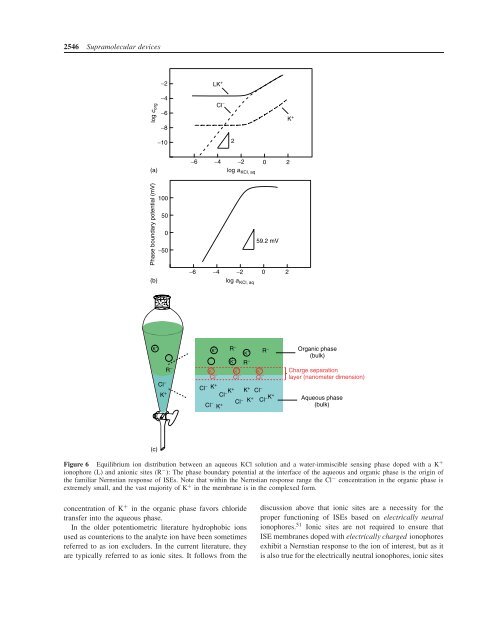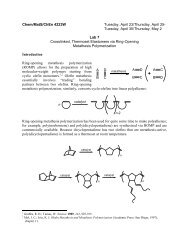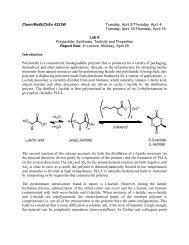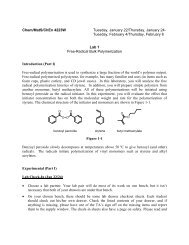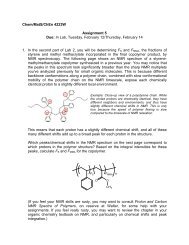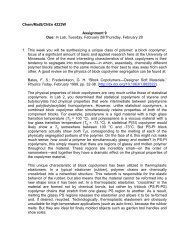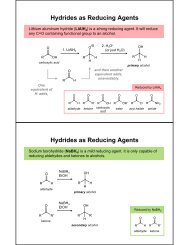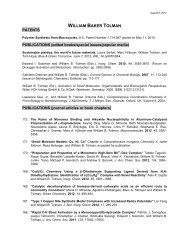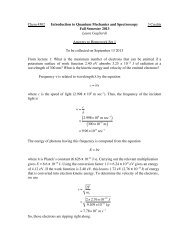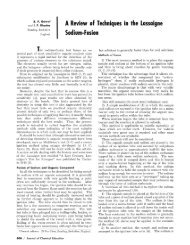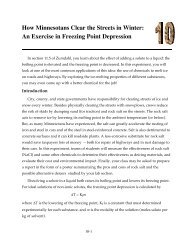Ion-Selective Electrodes With Ionophore-Doped Sensing Membranes
Ion-Selective Electrodes With Ionophore-Doped Sensing Membranes
Ion-Selective Electrodes With Ionophore-Doped Sensing Membranes
Create successful ePaper yourself
Turn your PDF publications into a flip-book with our unique Google optimized e-Paper software.
2546 Supramolecular devices<br />
−2<br />
LK +<br />
−4<br />
Cl −<br />
−6<br />
K +<br />
−8<br />
−10<br />
2<br />
−6 −4 −2 0 2<br />
(a)<br />
log a KCl, aq<br />
100<br />
50<br />
0<br />
59.2 mV<br />
−50<br />
−6 −4 −2 0 2<br />
(b)<br />
log a KCl, aq<br />
K + K R − + R − Organic phase<br />
K +<br />
(bulk)<br />
K +<br />
R −<br />
R − K + Charge separation<br />
Cl − K +<br />
Cl − K +<br />
Cl − layer (nanometer dimension)<br />
Cl − Cl − K +<br />
K +<br />
Cl − K + K + Cl − Cl − K<br />
K + + Aqueous phase<br />
Cl − K + Cl −<br />
(bulk)<br />
log c org<br />
Phase boundary potential (mV)<br />
(c)<br />
Figure 6 Equilibrium ion distribution between an aqueous KCl solution and a water-immiscible sensing phase doped with a K +<br />
ionophore (L) and anionic sites (R − ): The phase boundary potential at the interface of the aqueous and organic phase is the origin of<br />
the familiar Nernstian response of ISEs. Note that within the Nernstian response range the Cl − concentration in the organic phase is<br />
extremely small, and the vast majority of K + in the membrane is in the complexed form.<br />
concentration of K + in the organic phase favors chloride<br />
transfer into the aqueous phase.<br />
In the older potentiometric literature hydrophobic ions<br />
used as counterions to the analyte ion have been sometimes<br />
referred to as ion excluders. In the current literature, they<br />
are typically referred to as ionic sites. It follows from the<br />
discussion above that ionic sites are a necessity for the<br />
proper functioning of ISEs based on electrically neutral<br />
ionophores. 51 <strong>Ion</strong>ic sites are not required to ensure that<br />
ISE membranes doped with electrically charged ionophores<br />
exhibit a Nernstian response to the ion of interest, but as it<br />
is also true for the electrically neutral ionophores, ionic sites


